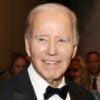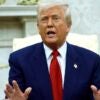A former United States Ambassador to Thailand tells of being asked to contribute to a local university in Bangkok that wanted to set up an “America corner” in its library—nothing more than a computer station and a few shelves of informational material. When he arrived for the unveiling, however, he found that the modest corner endowed by the United States was dwarfed by the Chinese donation of a new building, fully staffed, to house one of its Confucius Institutes.
While U.S. public diplomacy since September 11, 2001, has focused on countering terrorism and the radicalization of the Muslim world, China has been moving ahead, taking a page out of the U.S. playbook. Aiming to promote their model of governance, the Chinese have invested heavily in public diplomacy. Extravaganzas such as the Beijing Olympics and the Shanghai Expo are only the most visible manifestations of this strategy. World Affairs Journal’s July/August issue explores the Chinese advances.
The Daily Signal depends on the support of readers like you. Donate now
During a hearing earlier this year, Senator Richard Lugar (R–IN) ranking Member on the Senate Foreign Relations Committee, pointedly asked Secretary of State Hillary Clinton about the 60 cultural centers at universities across the United States that China has been able to open. Clinton told him that the United States does not have the money to do what the Chinese are doing. Not so. With an economy three times the size of the Chinese, the United States certainly has the money.
More precisely the Secretary’s answer should be, “we don’t have the priorities to do what they are doing.” (The State Department has requested $15 million for 2011 to open eight to 10 cultural centers for the entire world.) There are 282 Confucius Institutes scattered around the globe, all controlled from Beijing by the Office of Chinese Language Council International.
China Radio International now emphasizes cultural and informational broadcasting internationally, and is investing in its own 24-hour news network. China also has its own version of the Peace Corps. Chinese diplomats are also being upgraded for their country expertise. Instead of being rotated out every two years like most U.S. embassy personnel, they are encouraged to return three or four times to high-priority countries like Cambodia or Myanmar. The Chinese are also among the world’s most aggressive users of student exchange programs with numbers rising dramatically, from 80,000 in 2008 in the United States to more than 98,000 in 2009.
The objective is clear: allowing Chinese influence to flow out, while preventing information and ideas from flowing back in to “contaminate” China. As Stefan Halper puts it in his new book, The Beijing Consensus, “Eschewing confrontation, China’s true challenge arises in a separate realm, namely, Beijing’s transformative, leading role in the rise of a Chinese brand of capitalism and a Chinese conception of the international community, both opposed to and substantially different from their Western version.”
It is high time the U.S. government took this challenge seriously. History did not come to an end with the election of President Obama, not did the war of ideas.
Helle C. Dale is Senior Fellow in Public Diplomacy at the Heritage Foundation.
?






























